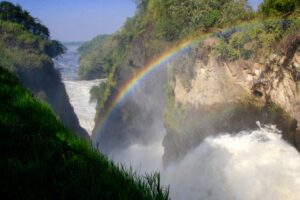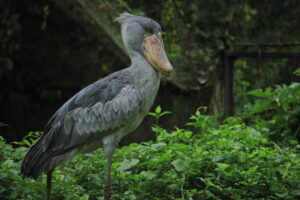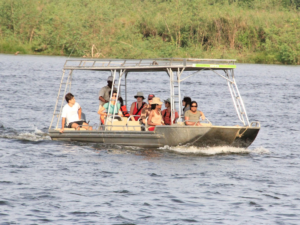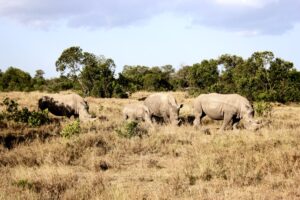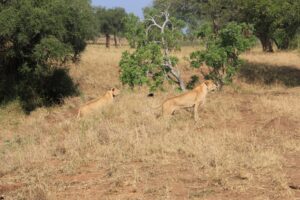The Jewel of the Nile
Murchison Falls Conservation Area covering 5,072 square kilometers is one of Uganda’s largest and oldest protected areas laying at the northern end of the Albertine Rift Valley.
It is named after the breath-taking spectacular water falls on the Great River Nile which in 1864, a British explorer Sir Samuel Baker chose to name Murchison, in honor of the distinguished President of the Royal Geographical Society.
The dramatic waterfalls which is the mainstay of the national park is where the Nile, the world’s longest river contracts from a grand stream to explode violently through a narrow six metre gorge into the cauldron of turbulent water 40 meters below ,popularly known as the Devil’s cauldron. According to Samuel Baker, the water falls is the most important object throughout the course of the river.
Murchison Falls National Park boundaries were gazetted in 1952 by the then British Colonial government after surveys and negotiations with the local district administrations of Bunyoro and Acholi. In August 1954, the Board of Trustees for the Uganda National Parks made decisions on the lay out and the design of the park. This was followed by the opening up of the tracks to more remote corners of the park such as Rabongo Forest and the Chobe Sector. Besides the magnificent Nile bisecting the park, Murchison Falls became famous for the abundance of wildlife populations in the lush borassus grassland particularly on the northern banks of the River, including herds of Elephants, Buffalos and Giraffes marauding the plains and woodlands. In the 1960s, the estimated population of elephants was close to 16,000.
Murchison Falls has received many notable foreign visitors. In 1907, Winston Churchill hiked, boated and bicycled up the Nile corridor to the falls. He was followed by Theodore Roosevelt in 1909 during a hunting safari that cost, by today’s prices, a phenomenal US$1.8m!
In 1951, the falls provided a backdrop for Humphrey Bogart in John Huston’s famous movie, The African Queen which was filmed on location along the Murchison Nile and on Lake Albert. British royals have also visited Murchison, the Prince of Wales (later Edward VII) in 1930 and the Queen Mother in 1959 the fauna diversity of the park. The least happy celebrity visitor was Ernest Hemingway in 1954 that literally dropped in. His intention was simply to overfly the waterfall but his plane clipped an old telegraph wire strung across the gorge and cart wheeled into the river line forest. Hemingway and his wife were rescued and taken to Butiaba where their rescue plane crashed on takeoff
Between September 1972 and October 1973, the flourishing park suffered a setback when the then President Idi Amin imposed a ban on foreign visitors. The Park was also renamed Kabalega Falls after the famous king of Bunyoro who resisted colonization efforts by the ottoman Empire and the British.
In the mid 70s, most of the conservation activities came to a halt prompting unabated poaching that rose to unprecedented proportions. The rich park also suffered mass poaching and the wildlife population was largely threatened during the 20 years of insurgency by the rebel armies which had turned the park as food basket and shooting target with the herds of animals as their subject. However, with the return of peace to the northern region, Wildlife populations have largely recovered. During the popular game drives, a variety of Antelopes, Elephants, Giraffes, Buffalos and Lions are regularly encountered with increasing frequency.

